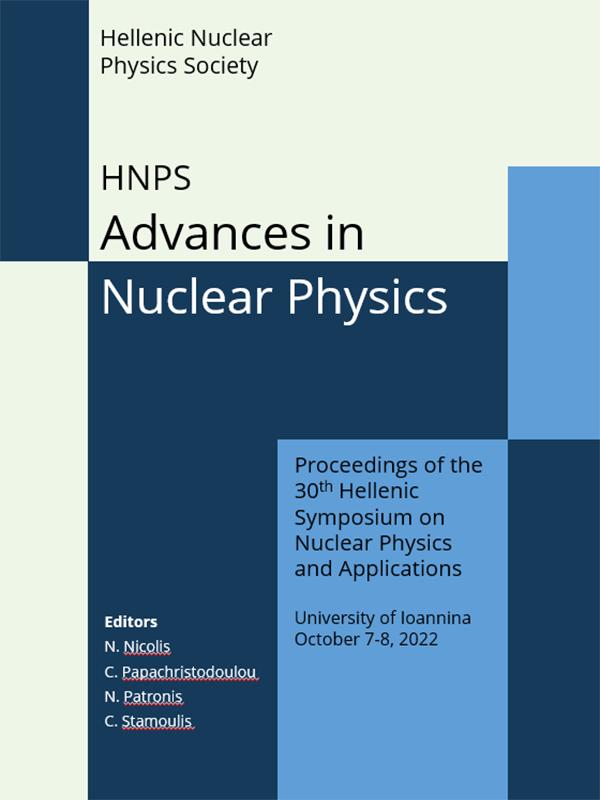Ion Traps for Nuclear Decay Studies: a design for a handheld Electron Beam Ion Trap (EBIT)

Abstract
Nuclear decay studies of ionized species are of paramount importance in many astrophysical scenarios: from Big-Bang Nucleosynthesis to cosmochronometer. Recently, new facilities, able to investigate nuclear decay in hot plasma, have been conceived and their design is in progress. Anyhow, the use of hot plasma in ECR traps intrinsically exhibits limitation due the high level of background and, on the other side, the necessity to push at the limit the ECR technology to get large plasma density and temperature. Here we report about a different approach, involving the design of an ultra-compact Electron Beam Ion Trap (m-EBIT) able to perform nuclear decay studies for high charge-state ions confined in cold plasma. A preliminary design of the trap, assembly and magnetic field characterization is presented.
Article Details
- How to Cite
-
Musumarra, A., Massimi, C., Pellegriti, M. G., & Leone, F. (2023). Ion Traps for Nuclear Decay Studies: a design for a handheld Electron Beam Ion Trap (EBIT). HNPS Advances in Nuclear Physics, 29, 1–7. https://doi.org/10.12681/hnpsanp.5186
- Issue
- Vol. 29 (2023): HNPS2022
- Section
- Oral contributions

This work is licensed under a Creative Commons Attribution-NonCommercial-NoDerivatives 4.0 International License.





